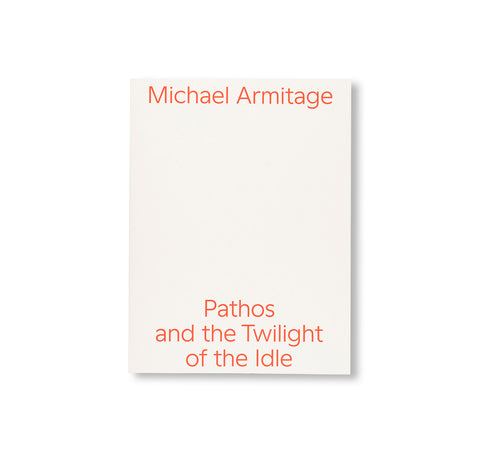YOU, WHO ARE STILL ALIVE by Michael Armitage
ケニア人アーティスト、マイケル・アーミテージ(Michael Armitage)の作品集。2022年にスイスの「クンスターレ・バーゼル(Kunsthalle Basel)」で開催された「You, Who Are Still Alive」展、そしてロンドンのギャラリー「ホワイト・キューブ・バーモンジー(White Cube Bermondsey)」で開催された「Amongst the Living」展に伴い刊行された。
作者は、起源神話や儀式、日常の英雄的行為や権力の濫用といったテーマを取り上げ、ルブゴ(樹皮布)を不規則に縫い合わせ、しばしば穴や裂け目が見えるように、さまざまな資料のイメージを絡めながら制作している。全面に細部まで記録されている数々の絵画は、その構図とテクスチャーの一体感を表している。また、南アフリカの歌手、俳優、作家である Nakhane による架空のメールは、作者の絵画の根底にある構図の緊張に応答する。英国の権威ある文学賞「ブッカ―賞」にノミネートされたほか、数々の受賞歴を持つケニア人作家、劇作家、エッセイスト、グギ・ワ・ジオンゴ(Ngũgĩ wa Thiong’o)の作品『The Perfect Nine』の抜粋は、作者の絵画を、自立を求めるキクユの基礎的な探求に基づかせている。「クンスターレ・バーゼル(Kunsthalle Basel)」のディレクター兼チーフ・キュレーターを務めるエレナ・フィリポビッチ(Elena Filipovic)によるエッセイでは、美術史から物語体のクライマックス、歴史的補償の可能性まで、作者がテーマを「位置づけ、覆す」二重の作用を探求している。また、イギリス人画家のニコラス・ハットフル(Nicholas Hatfull)は、作者の構図の選択と風景のモチーフ、そしてそれらが帝国と独立後の歴史とどのように結びついているかを考察している。
A monograph on Michael Armitage, featuring the Kenyan-British artist’s hauntingly incandescent paintings from the last two years, is published on the occasion of his exhibitions at Kunsthalle Basel (May – September 2022) and White Cube Bermondsey, London (September – November 2022).
Addressing themes from founding myths and rituals to everyday heroisms and abuses of power, Armitage entwines imagery from various sources on irregular, stitched together pieces of Lubugo cloth, which often reveal holes and tears. A span of full-bleed details honours the cohesion between composition and texture, and a fictional email by South African singer, actor and author Nakhane answers back to underlying compositional tensions. An extract from award-winning novelist, playwright and essayist Ngũgĩ wa Thiong’o’s recent epic The Perfect Nine (2020) grounds the paintings by Armitage in the foundational Gĩkũyũ quest for self-reliance. An essay by director of Kunsthalle Basel Elena Filipovic explores the double operation through which the artist both ‘locates and subverts’ themes ranging from art history to narrative climax and the possibility of historical reparation. And British painter Nicholas Hatfull considers Armitage’s compositional choices and landscape motifs, and how they connect to histories of empire and post-independence.
















